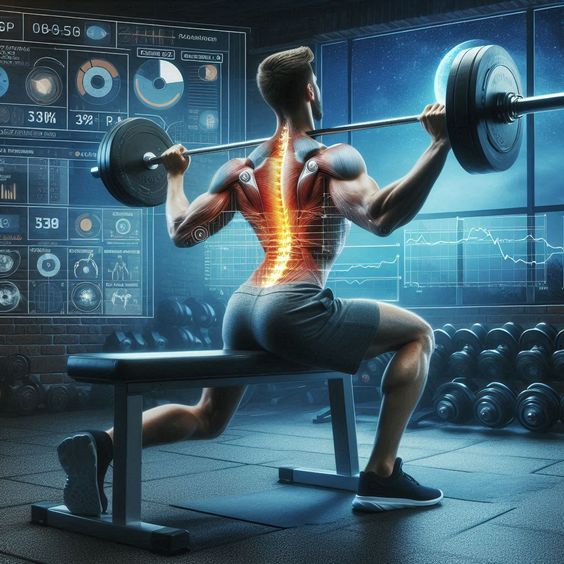Recovering after a workout is really important for your body. It helps your muscles heal, eases soreness, and gives you more energy. If you skip recovery, you might feel tired, struggle to do your best, or even get hurt. By learning and using good recovery methods, you can reach your fitness goals faster and stay healthier overall.
In this guide to recovering after a workout, we’ll cover some easy tips to help you feel better. First, we’ll talk about why drinking enough water and eating the right foods is important for recovery. Then, we’ll show you simple methods like stretching and using a foam roller to help your muscles relax and heal. You’ll also learn about useful tools that can help with your recovery. Plus, we’ll give you tips on how to know when your body needs more time to rest. By the end of this guide, you’ll have practical skills to help you recover faster and enjoy your fitness journey more!
Understanding Post-Workout Recovery
What is Post-Workout Recovery?
Post-workout recovery is about giving your body the time and care it needs to heal and get stronger after you exercise. This involves doing specific activities and choosing healthy foods to help regain energy, fix muscle damage, and keep yourself healthy. Recovery is important for everyone who works out, whether you’re a serious athlete or just trying to stay active.
Benefits of Recovery
By using effective post-workout recovery strategies, you can improve your fitness journey. Focusing on recovery boosts your physical performance and supports your mental and emotional well-being. Whether you rest, hydrate, eat nutritious food, or engage in relaxing activities, remember that taking care of yourself after a workout is just as important as the workout itself!
Read in detail about Quick & Healthy 30-Minute Dinner Recipes for Busy Weeknights
Best Practices for Post-Workout Recovery
After a tough workout, your body needs some care to recover well. Here are some easy tips to help you feel better and get ready for your next workout!
1.Hydration: Replenishing Your Body
Water is super important for recovery! It helps move nutrients around your body, keeps your temperature normal, and helps get rid of waste. When you work out, you sweat and lose water, so it’s vital to drink enough to avoid feeling tired and to keep performing well.
How Much Water to Drink
Try to drink 16-24 ounces of water within the first hour after your workout. If you worked out really hard or for a long time, it’s a good idea to drink something with electrolytes to replace lost minerals.
2.Nutrition: Fueling Your Recovery
- Protein: This is key for fixing and building muscles. Aim for about 20-30 grams after you work out.
- Carbohydrates: These help restore energy levels. A mix of quick and slow-digesting carbs is best.
- Fats: Healthy fats can be part of your meals, but focus on protein and carbs right after working out.
- A protein shake with a banana
- Greek yogurt topped with berries and a little granola
- A turkey sandwich on whole-grain bread
- Oatmeal with almond butter and sliced fruit
3.Rest and Sleep: Essential for Recovery
Getting good sleep is just as important as eating well. When you sleep, your body fixes muscles, balances hormones, and restores energy. Not getting enough sleep can make you tired, hurt your performance, and increase the risk of injury.
- Stick to a Routine: Go to bed and wake up at the same time every day.
- Make Your Room Comfortable: Keep your bedroom dark, quiet, and cool.
- Limit Screen Time: Try to avoid screens at least an hour before bedtime to help your body prepare for sleep.
- Relax Before Bed: Do calming activities like reading or meditating to help your body wind down.
Essential Recovery Techniques for Optimal Fitness
1.Stretching and Flexibility
Post-exercise stretching is often an overlooked aspect of fitness routines. When you engage in physical activity, your muscles undergo contraction and can become tight. Stretching is essential for elongating these muscles, which enhances flexibility and encourages improved blood circulation. This increase in blood flow not only helps in flushing out metabolic byproducts but also ensures that your muscles receive adequate oxygen and nutrients, speeding up recovery.
Regular stretching also contributes to an expanded range of motion, which can lead to more effective workouts while simultaneously lowering the risk of injuries. Additionally, stretching has a calming effect, helping to relieve stress after a demanding session.
Effective Stretches for Various Muscle Groups
- Hamstrings: Sit on the floor with your legs extended. Reach towards your toes while maintaining a straight back. Hold this position for 20-30 seconds.
- Quadriceps: While standing, grasp one foot and pull it towards your buttocks, keeping your knees aligned. Hold for 20-30 seconds.
- Shoulders: Cross one arm over your chest and gently pull it closer with your opposite arm. Hold this stretch for 20-30 seconds on each side.
- Back: Sit in a cross-legged position and extend your arms forward, stretching your back. Hold for 20-30 seconds.
Integrating these stretches into your post-workout routine can significantly alleviate tightness and enhance your flexibility.
2.Foam Rolling and Self-Myofascial Release
Foam rolling is a popular technique for self-myofascial release, aimed at relieving muscle tension, soreness, and inflammation. By applying pressure to specific muscle groups, you can effectively break down knots and adhesions in your muscles and fascia, which improves blood flow and accelerates recovery.
Incorporating foam rolling into your routine can also enhance flexibility and range of motion, facilitating better exercise performance. Furthermore, it plays a preventive role against injuries by keeping muscles flexible and reducing tightness.
How to Foam Roll Effectively
- Back: Lie down with a foam roller positioned under your upper back. Gently roll from your upper back to your lower back, pausing on any tight areas for 20-30 seconds.
- Quads: Place the foam roller beneath your thighs and roll from your hips down to your knees, applying pressure to tight spots.
- Calves: Sit with the roller under your calves and roll back and forth to ease tension.
- IT Band: Lie on your side with the foam roller under your hip, rolling down the outer thigh toward your knee.
Remember to foam roll slowly and listen to your body; if you encounter sharp pain, it’s important to stop immediately.
Read in details about Quick Fitness Solutions for a Healthier Lifestyle
Active Recovery
Active recovery consists of low-intensity activities performed after high-intensity workouts, while passive recovery involves complete rest. Both are essential, but active recovery promotes better blood circulation and aids in alleviating muscle soreness by keeping your body moving without exerting excessive effort.
Low-Intensity Activities to Consider
- Walking: Engaging in a brisk walk helps keep your muscles engaged and boosts circulation, facilitating recovery.
- Yoga: Gentle yoga sessions can enhance flexibility, lower stress levels, and promote relaxation, making it an excellent active recovery method.
- Swimming: Light swimming is another effective way to relax tight muscles while offering a soothing effect on the body.
Incorporating these low-intensity activities into your recovery routine can greatly enhance your overall fitness journey.
Conclusion
Integrating recovery techniques such as stretching, foam rolling, and active recovery into your fitness regimen is essential for achieving long-term success. These methods not only reduce soreness and improve flexibility but also contribute to better performance in future workouts. By prioritizing recovery, you invest in your body and set yourself up for consistent and effective training.
Recovery Tools and Products
1.Compression Gear
Compression gear, such as sleeves, socks, and tights, plays a vital role in enhancing recovery post-exercise. These garments provide consistent pressure on muscles, which can help reduce soreness and fatigue. By improving blood circulation, compression wear promotes faster removal of metabolic waste, allowing your body to heal more efficiently. Additionally, many athletes find that wearing compression gear during workouts improves performance by reducing muscle oscillation and increasing stability.
2. Ice Baths and Heat Therapy
Understanding when to apply ice and when to use heat can significantly impact your recovery process. Ice baths are most effective immediately after intense workouts or injuries, as they help constrict blood vessels, reducing inflammation and numbing pain. Conversely, heat therapy is beneficial for muscle relaxation and stiffness. It increases blood flow, which can alleviate tension in sore muscles and joints. Generally, ice is preferred within the first 48 hours post-exercise for acute injuries, while heat can be utilized for muscle soreness and tightness once inflammation has subsided.
3. Supplements
The supplement industry offers a plethora of options to aid recovery, with Branched-Chain Amino Acids (BCAAs) and protein powders being the most popular. BCAAs are essential amino acids that can decrease muscle soreness and stimulate muscle protein synthesis, making them beneficial during and after workouts. Protein powders, on the other hand, provide a convenient source of protein that supports muscle repair and growth.
Safety and Effectiveness of Supplements:
Before introducing any new supplement into your regimen, it’s important to seek guidance from a healthcare expert. While some supplements can be beneficial for recovery, individual needs vary, and professional advice ensures you make safe choices. Focus on obtaining nutrients from whole foods first, using supplements to complement your diet where necessary. Be sure to choose products that have been independently tested for quality and purity.
Read in details about Top Supplements for Faster Fitness Results
Signs You Need More Recovery
Listening to Your Body
Common Signs of Overtraining or Inadequate Recovery:
Your body often communicates its need for rest. Pay attention to signs such as persistent fatigue, decreased performance, mood swings, and increased injuries. If you find yourself feeling unusually sore or unable to complete your usual workouts, it might be time to reassess your recovery strategy. Additionally, chronic fatigue or lack of motivation can signal that your body is in need of a break.
When to Seek Professional Help:
If you notice ongoing pain or exhibit signs of overtraining, consulting a healthcare professional is advisable. This includes experiencing prolonged fatigue or injuries that aren’t improving with rest. Early intervention can help prevent more serious complications, enabling a safer return to your fitness activities.
Conclusion
Recap of Key Points
Incorporating effective recovery strategies is crucial for optimizing your fitness journey. From utilizing compression gear and understanding the benefits of ice versus heat therapy to considering supplements wisely, these tools can significantly enhance your recovery process. Additionally, listening to your body and recognizing signs of overtraining will help you stay on track and avoid injuries.
Make Recovery a Priority:
Treat your recovery with the same importance as your training sessions. It’s essential to recognize that recovery plays a crucial role in your overall fitness journey and should be an active part of your routine, rather than something you consider only after workouts.
Call to Action
We’d love to hear from you! Share your favorite recovery tips or personal experiences in the comments below. Your insights could inspire others to prioritize their recovery!
Additional Resources
Links to Related Articles
- Benefits of Nutrition in Fitness
- How to Create an Effective Workout Routine
- Tips for Staying Motivated in Your Fitness Journey

.jpg)















0 Comments